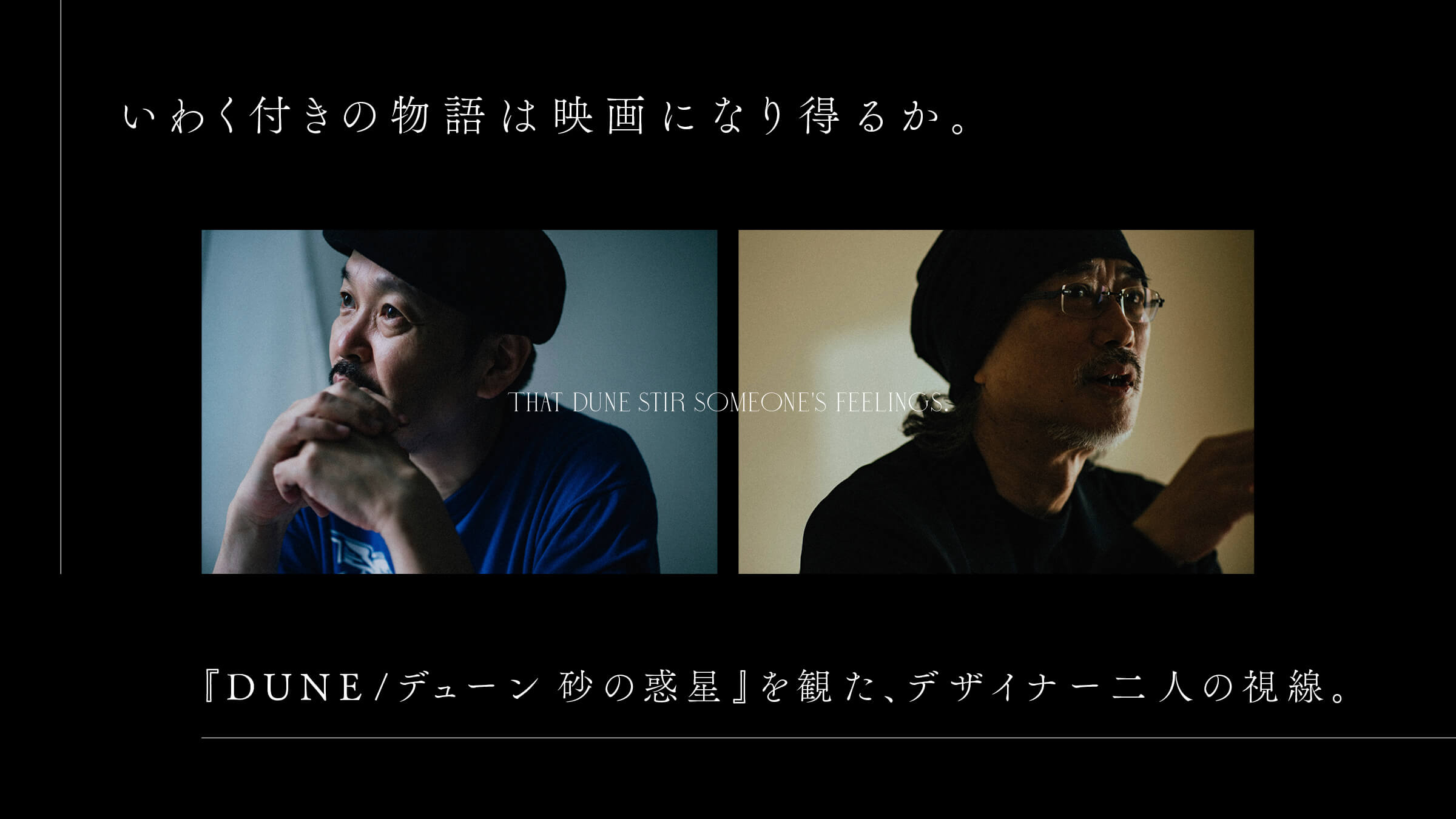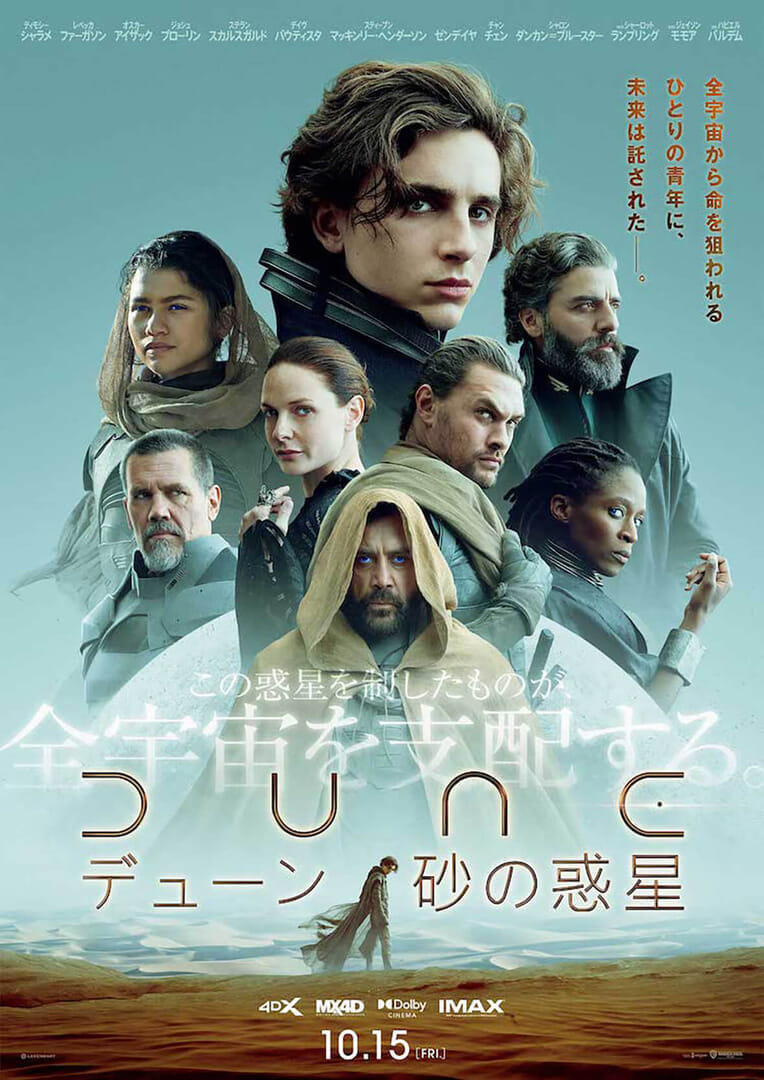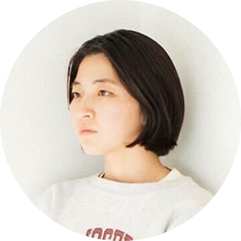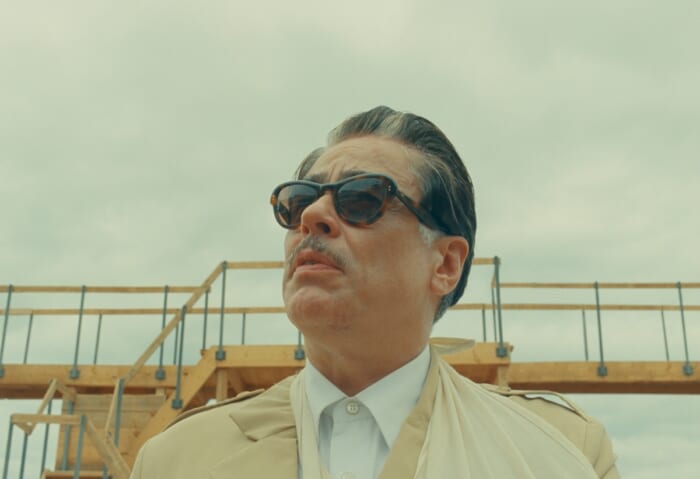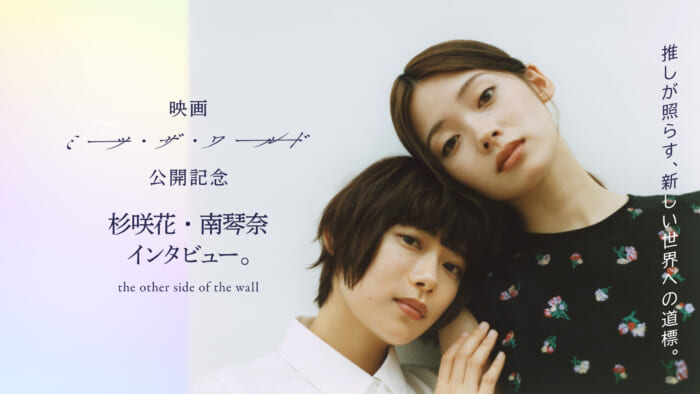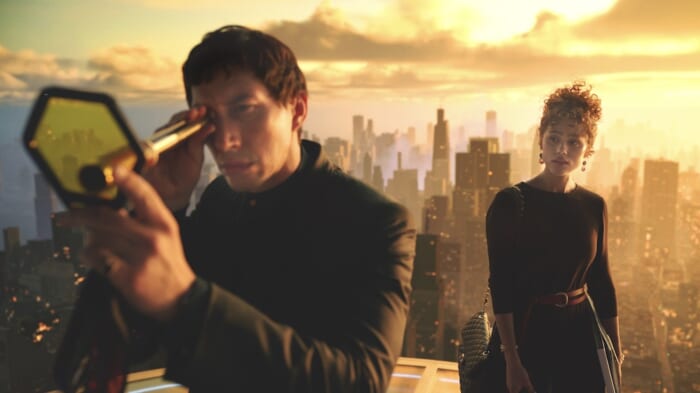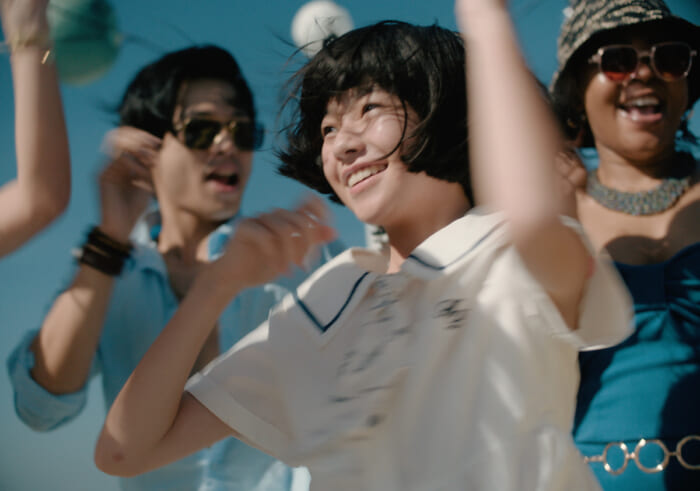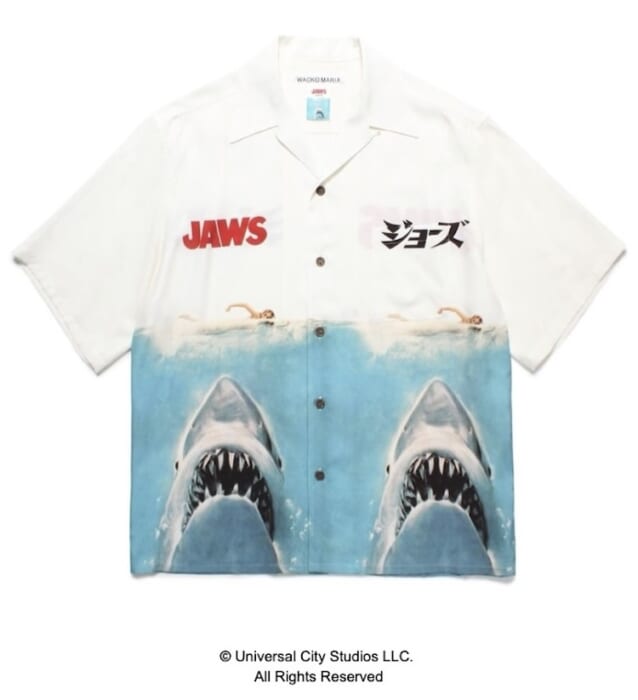Paul Atreides (Timothée Chalamet) is a young man with the ability to see the future. The Atreides family and their arch-enemies, the Harkonnen family, are engaged in an epic battle for control of the universe. Paul, a young man whose father was killed, stands up for revenge and for peace in the entire universe as a giant sand worm attacks the planet.
*Notations in the article
Novel "Dune/Planet of Sand" (Frank Herbert) → Novel "Dune", novel
Movie "Dune: Planet of the Sand" (Directed by Denis Villeneuve) → Now, Villeneuve's version
Movie "Dune / Planet of the Sands" (directed by David Lynch) → Lynch Edition
Film "DUNE" (directed by Alejandro Jodorowsky) → Jodorowsky's version
(as a worldview) Planet of the Sands DUNE -> "DUNE"
CASE 1: Yoria Oshima
PROFILE

Graphic designer and art director. Born in Tochigi Prefecture, graduated from Tokyo Zokei University. He has been designing mainly graphics for movies, exhibition publicity materials, and books. Major works include "Paterson," "Shoplifters," "Midsummer," and "Last Night in Soho" for films, "Shuntaro Tanikawa Exhibition" and "Moomin Exhibition" for exhibitions, and "Birds/Banana Yoshimoto" and "Small Boxes/Yoko Ogawa" for books. Film column in HOUYHNHNMSitting High.in the Series.
The director's main focus is not design!

Dune: How did you see the design aspect of the film "Dune: Planet of the Sands" (hereafter referred to as "this film")?
I will talk about the design later, but my view is that it is not the main focus of the director, Villeneuve. I will talk about that later.
Oh! I am looking forward to hearing more about that. I see that you have brought a lot of materials with you today...
This book, "Typography and Design in Science Fiction Movies," is based on a website that thoroughly researched and listed fonts in science fiction movies, including the text, which is very interesting. For example, there is a font that is often used in science fiction movies, and it is also an orthodox font, so it is often used in signboards of nursing homes in other countries. The image of existing fonts is sometimes turned upside down by their use in science fiction movies.
I think this is a good example of why science fiction films are so interesting, even when it comes to fonts.

This was the title of the teaser for this work (see image above). What kind of a thing is this to read "DUNE"? I thought. The "E" at the end is a "C" (laugh). Even though the novel is widely recognized, I thought this was very brave. I also like how you combined it with an overhead view like a satellite photo.

While the typeface is innovative, the title backdrop follows science fiction film theory. The middle bar of the final "E" in "DUNE" is the letter "C" with a dot "." added after it to make it read "E". In the case of the movie "Alien," a simple white bar appears at the beginning, and then more bars are added to make the title "ALIEN" appear (see image above). This title backdrop was sensational, and I couldn't help but grin at the attention to detail, as it was a nod to "Alien," the milestone of science fiction movies.
The material here is from the "Jodorowsky's DUNE" section in the booklet of the Alejandro Jodorowsky Blu-ray Box designed by Mr. Oshima.

(This is a design drawing of Mobius for Jodorowsky's version of "DUNE" (which was aborted and never realized), and the costumes and spaceship were very fancy. Dan O'Bannon, a special effects technician whom Jodorowsky invited to Paris to work on this film, later wrote the script for "Alien," and Giger designed the buildings for Jodorowsky's version. The connections of the Jodorowsky version are utilized in "Alien," and his achievements are very significant.
Unlike Jodorowsky's version, the costumes and buildings in this film were very restrained in design.
I think there was an emphasis on subtraction in this film. I read an interview on the web with Casey Storm, costume designer for Spike Jonze's "Her" ("Her"), and he said that he subtracted in that film, that art for sci-fi films tends to add futuristic goggles and guns, but "Her" is about the near future, an extension of the present. Her" is a story about the near future, which is an extension of the present, so he talked with Spike Jonze about subtracting.
For example, neckties and jeans do not appear in that world, but since they are not on the screen, we do not notice them at first glance. I heard that they did this because they thought that since fashion is a repetitive process, it would not be surprising if they used an image of clothing from a slightly older era. I think they tried to simplify their costumes based on the history of clothing, which has shifted from decorative to simple. It is possible that they are thinking in a similar way for this work.

That is an interesting point of view.
I think it is of course significant that it is only a faithful reproduction of the original work. Although this work is a fiction, it may just happen to be a turn of medieval images in that period of the distant future in the cultural history of architecture and clothing that has been repeated over and over again. Even so, I think it is very brave of them to use things that are still in use today, such as bullfighter figurines and bagpipes, in the film. But it is a very new and at the same time realistic expression for a science fiction film.


